Heritage Sites
Whenever we hear people talking about exploring historical places in Pune, the most common name that comes up is Shaniwar Wada (all thanks to Bajirao Mastani). But there are so many places worth visiting which are lesser known and hold a treasure trove of history. Here’s a list of obscure heritage places around Pune that you should totally check out!
Shaniwar Wada Aga Khan Palace Pataleshwar Temple Sinhagad Fort Lal Mahal Parvati Hill temple Shinde Chhatri Vishrambaug Wada Kirkee War Cemetery Ohel David Synagogue Nana wada Zero Stone Shri Chattushringi Devi Mandir Kasba Ganpati Temple Trishunda Ganpati Mahatma Phule Mandai Albert Edward Institute Library Wellesley Bridge(sangam bridge)
- Shaniwar Wada
- Aga Khan Palace
- Pateleshwar Temple
- Sinhagad Fort
- Lal Mahal / Mehal
- Parvati hill temple
- Shinde Chatri
- Vishrambagh Wada
- National war museum
- Ohel david synagogue
- Nana wada
- Pune zero stone
- Kasba Ganpati temple
- Shri Chattushringi Devi Mandir
- Trishunda ganpati Mandir
- Mahatma phule mandai
- Albert Edward Institute Library
- Wellesley bridge(sangam bridge)
Shaniwar Wada
शनिवार वाडा
Shaniwar Wada(शनिवार वाडा) a 13 storey palace of Peshwas was built by Bajirao-I, in the year 1736.It was head quarter of the Peshwas and it symbolizes Pune’s culture.The structure was built giving security the highest priority. The main entrance is known as ‘Delhi Darwaja’ & others have names like Ganesh, Mastani, Jambhal, Khidki.
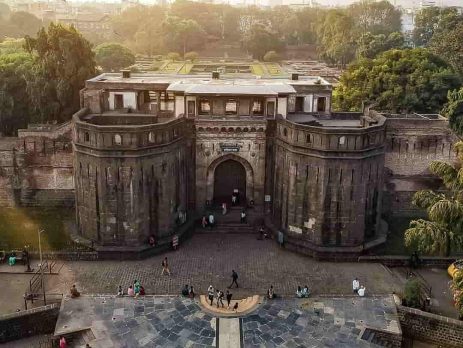
History
Shaniwar Wada is a historical fortification in the city of Pune, India.
- Built in 1732, it was the great seat of the Peshwas of the Maratha Empire until 1818. Following the rise of the Maratha Empire, the palace became the center of Indian politics in the 18th century.
- The fort itself was largely destroyed in 1828 by an unexplained fire, but the surviving structures are now maintained as a tourist site.
How to Reach from Pune
By Bus
By Car/ Rental Car Available
By Two Wheeler
Aga Khan Palace
आगाखान पॅलेस
Located within a sprawling campus, the palace is known for its brilliant Islamic style architecture. It is located on 19 acres of land that includes expansive, well-maintained lawns. The main edifice is built on an area of 7 acres and has 5 huge halls. One of the
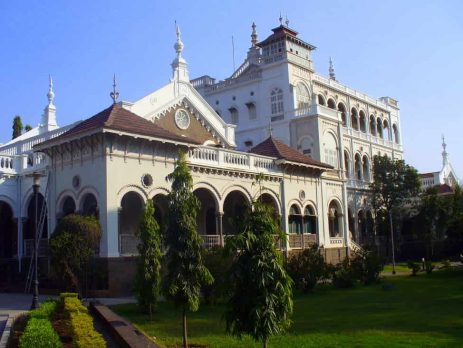
History
- It was Sultan Muhammed Shah Aga Khan III, the 48th Imam or spiritual head of the Khoja Ismaili religion and the All-India Muslim League’s (AIML) first president, who built this grand palace in the year 1892. He commissioned the construction of the palace to provide.
- The palace played a significant role in India’s struggle for freedom. Soon after Mahatma Gandhi launched the Quit India Movement on 8th August 1942, he was arrested by the British officials and brought to this palace in Pune on 10th August to be kept imprisoned. He was accompanied by Kasturba Gandhi, his personal secretary Mahadevbhai Desai, Sarojini Naidu, Pyarelal Nayar, and Dr. Sushila Nayar. Gandhiji and his colleagues were kept in this palace for almost two years before they were released on 6th May 1944. During this period, Mahadev Desai and Kasturba Gandhi breathed their last within the palace premises.
- In 1969, Prince Karim El Hussenim Aga Khan IV gave the palace to the Gandhi Smarak Samiti to show his respect towards Mahatma Gandhi. The National Model School was housed in this palace until 1970. In 1974, Indira Gandhi, who was the Prime Minister of India at that time, visited the palace and granted a yearly sum of 2 lakh rupees for its preservation and maintenance. However, over the years, the palace faced much neglect due to the inappropriate distribution of funds. In 2003, it was declared as a monument of national importance by the Archaeological Survey of India (ASI).
How to Reach from Pune
By Bus
By Car/ Rental Car Available
By Two Wheeler
Pataleshwar Temple
पाताळेश्र्वर लेणी / मंदिर
The architecture was built by the Pandavas during their exile and miraculously in just a few hours when they needed shelter. While another theory suggests that its makers saw a faulty line and was abandoned while the temple was still being carved. Thus, giving it an unfinished vibe. But all of these still remain a mystery and there are many caves yet to be dug up. The place is being maintained by the Archaeological Survey of India and is a representation of the city’s heritage.
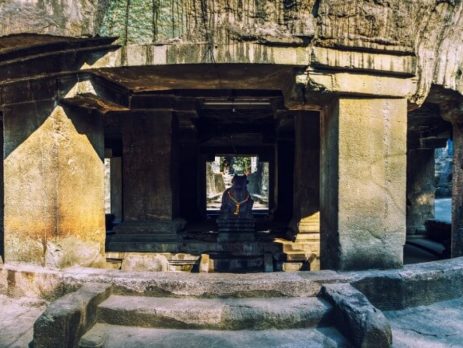
History
- The Pataleshwar Caves dates back to the 8th century. Can you believe that something as old as the tale of time is still standing tall and tangible right in front of you? The name if bifurcated means, ‘Patal’ i.e. underworld and ‘Eshwar’ means god and it is dedicated to Lord Shiva. The vibe of the place is so soothing that time will just pass you by.
- The Pataleshwar caves are a monolithic excavation of a rocky hillock that gently swells and forms the terrain here. Its entrance is about a 20 feet long path from the east of the complex. It was originally an excavated tunnel but one that collapsed. It was, for a period, restored with a masonry.
- The Pataleshwar Caves, also referred to as the Panchaleshvara temple or Bhamburde Pandav cave temple, are an 8th century rock-cut Hindu temple from the Rashtrakuta period located in Pune, Maharashtra, India.
How to Reach from Pune
By Bus
By Car/ Rental Car Available
By Two Wheeler
Sinhagad Fort
सिंहगड किल्ला
The fort is also on the famous fort in Maharashtra which has a great history of Tanaji Malusare. The fort was captured by Tanaji Malusare and his brother.
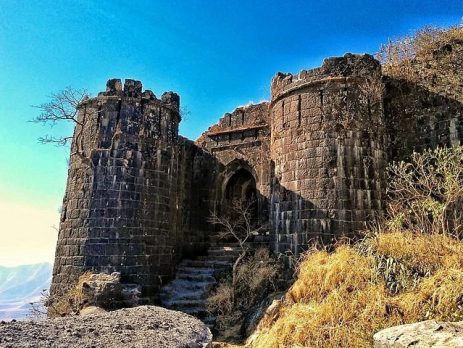
History
- Sinhagad, ealier known as ‘Kondhana’ is the most prominent and popular fort in Pune.It is located at village Donaje, taluka-Haveli.
- It is 25 km away from Pune on a hill 1290 m high. Tanaji Malusare-Chh. Shivaji’s trsusted and brave general,fought a battle here all alone with the Mughal army. on hearing news of his death, Chh.Shivaji said. “We won the fort but lost the lion” (“Gad Ala Pan Sinha Gela”), and so after his death Chh. Shivaji renamed this “Kondhana” fort as “Sinhagad”.
- Sinhagad fort was strategically built to provide natural protection from the enemies due to its very steep slopes. The walls of the forts and bastions were constructed only at key places. There are two gates to enter the fort named Kalyan Darwaja and Pune Darwaza. The Kalyan Darwaja is towards the southeast while the Pune Darwaza is towards north east. This fort is also called as center fort of Maratha empire as it is surrounded by many forts beside. During the clear climate you can see Rajgad, Purandar and Torna forts from the Sinhagad killa.
How to Reach from Pune
By Bus
By Car/ Rental Car Available
By Two Wheeler
Lal Mahal / Mehal
लाल महाल
Lal Mahal This is a new building made of brick and mortar. Lal Mahal Apart from the historical importance, being the childhood home of Shivaji Maharaj, the palace looks good with its red exterior and architectural style.
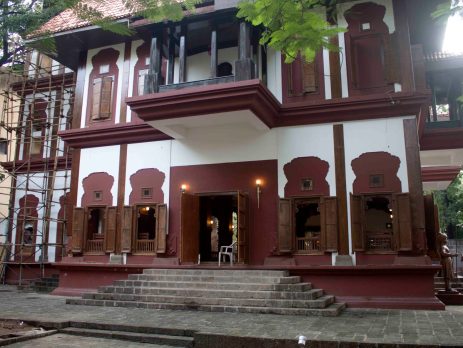
History
- The Lal Mahal (Red Palace) of Pune is one of the most famous monuments located in Pune. In the year 1630 AD, Chhatrapati Shivaji’s Father Shri Shahaji Bhosale, established the Lal Mahal for his wife Jijabai and son.
- Chhatrapati Shivaji Maharaj stayed here for several years until he captured his first fort. The original Lal Mahal fell into ruins and the current Lal Mahal is a reconstruction of the original and located in the center of the Pune city.
- Historically, the Lal Mahal is famous for an encounter between Chhatrapati Shivaji Maharaj and Shaista Khan where Chhatrapati Shivaji Maharaj cut off the later’s fingers when he was trying to escape from the window of the Lal Mahal.
How to Reach from Pune
By Bus
By Car/ Rental Car Available
By Two Wheeler
Parvati hill temple
पर्वती मंदिर
|
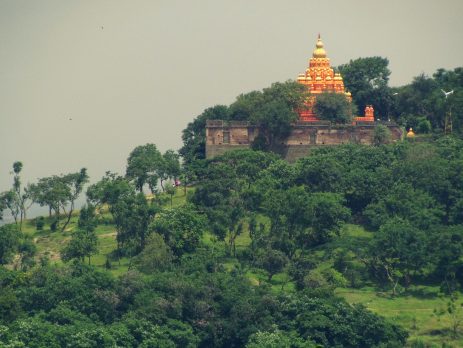
History
|
How to Reach from Pune
By Bus
By Car/ Rental Car Available
By Two Wheeler
Shinde Chatri
शिंदे छत्री
|
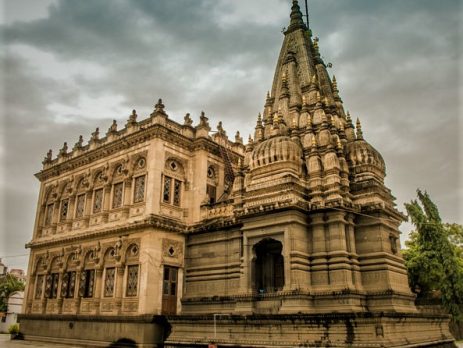
History
- Mahadji Shinde was a part of the powerful Scindia dynasty. And he built the temple of Lord Shiva in the Shinde Chhatri complex. Until 1794, when he died, the place only had that temple. And his last rites were performed beside it.
- Later, in 1965, his descendants, Madhavrao Scindia in particular, built the memorial structure. It’s near the sanctum of the temple, where Mahadji Shinde was cremated.
- The entire Shinde Chhatri Wanwadi complex is now maintained by the Shinde Devasthan Trust (set up by the Scindias) in Gwalior.
How to Reach from Pune
By Bus
By Car/ Rental Car Available
By Two Wheeler
Vishrambaug Wada
विश्रामबाग वाडा
This building is called Vishrambaug Wada. It was the grand residence of Peshwa Baji Rao II, the last Peshwa of the Maratha Empire in the early 19th century. The mansion was built in 1810. Baji Rao II preferred this residence instead of Shaniwar Wada, the main citadel of the Peshwas, which is situated close by. He lived at the mansion for eleven years.
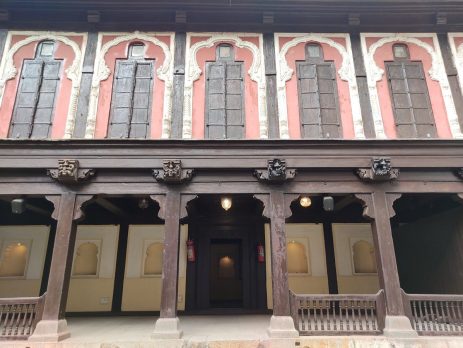
History
Vishrambag Wada is a historical fortification in the city of Pune, India.
- During the British Era, the Wada was used as a centre for Sanskrit learning. From 1930 to 1960, the Pune Municipal Corporation operated out of the building. Today, the building houses a post office and some government offices.
- Since it is a three-storied building, it is also called Teen Chowki Wada. The carved pillars are made of teak wood while the columns are cypress shaped.
- The mansion contains grand courtyards from where one can get impressive views of the structure and the architecture.
How to Reach from Pune
By Bus
By Car/ Rental Car Available
By Two Wheeler
National War Museum
राष्ट्रीय युद्ध स्मारक
- Situated amid lush greenery, this is the only National War Memorial of South Asia that has been erected by the contributions made by the citizens. The museum was developed to showcase the achievements of the Southern Command wing. You can see the ammunition, uniforms, and transformation that the Southern Command wings have witnessed over the years.
- You can see a beautiful display of the tanks and military aircraft. You can stand and get amazed at the hunk of a MiG-23BN used in the Kargil war, a replica of INS Trishul, and a detailed outlay of the Indo-China war and the Pakistan war of 1971.
- The names of the martyrs have been etched on the outside wall in alphabetical order, and you will hear patriotic songs playing in the background at all times.
- If guns and ammunition fascinate you, try out their paintball area to have some fun with your family and friends. There are clean washrooms in the memorial premises and a cafe to grab a quick bite with some handy snacks.
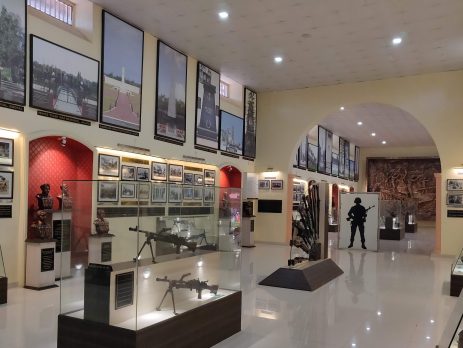
History
- The silver jubilee celebration of the victory of India over Pakistan in 1971 initiated the idea to set up a memorial for the post-independence martyrs. To mark the gratitude of our frontline warriors, Pune citizens formed a committee under the Indian Express where they came forward to erect the memorial without government aid or initiative.
- Brig N.M. Grat was the then chairman of the committee and approached the Southern Command wing to ask for a suitable piece of land. The board promptly acted upon the idea, and the place inaugurated the ever beautiful memorial on 15th August 1998.
How to Reach from Pune
By Bus
By Car/ Rental Car Available
By Two Wheeler
Ohel David Synagogue
- This Synagogue used to see more number of Jewish visitors during the monsoon and summer season. As many Jewish residents from Mumbai and nearby places would spend their summer and rainy months here in Pune, owing to its better climatic conditions. In the premises of the David Synagogue, there is tomb of the Late David Sassoon, where he had resided when alive. In its premises, you will also find a Mikvah.
- Apparently, a Hazzan from Mumbai goes to this synagogue to conduct Shabbat prayers. One of the popular tourist attractions of Pune, this Synagogue captivates visitors with its structural beauty. The spiritual calmness, which it radiates, also presents tourists with an opportunity to rejuvenate themselves amidst the clarity and tranquillity of this place. It is a perfect amalgamation of entrancing beauty and religious sanctity. It is easily accessible. Once can take a direct taxi or auto rickshaws to this place. There are also many buses until here.
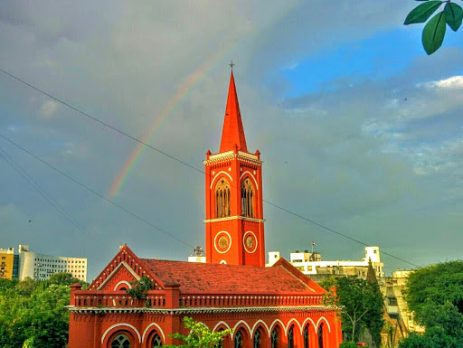
History
- Situated on the Moledina Road, David Synagogue, also known as Ohel David Synagogue, was built the Late David Sassoon. Its construction was started in 1863, which was completed in 1967. David was known for his philanthropic works in Pune. He had also built the Sassoon Hospital.
- Because of the red bricks used in David Synagogue construction, it is popularly known as Lal Davel or Red Synagogue or Red Temple. Although it is a place dedicated to Jewish community, it attracts visitors from all sections of society, from all over the world. Its startling architectural beauty, combined with the religious significance, makes for a worth remembering sight. It has been constructed in the neo-Gothic style, and displays a unique usage of various shades of colors.
How to Reach from Pune
By Bus
By Car/ Rental Car Available
By Two Wheeler
Nana Wada
नाना वाडा
- The beautiful architecture of the mansion has stood the test of time. It is primarily made of sagwan wood/teak and is an example of architecture from the Peshwa era. The elaborate woodwork consists of wooden railings, a timber ceiling, arches, motifs of banana flowers, cypress-shaped pillars, and more.
- In 1907, Pune’s Deccan Education Society converted part of the mansion into the New English School. As part of their expansion, a new building was added. This building has a British Gothic Revival architectural style. The confluence of the two distinct architectural styles makes this place visually interesting.
- Nana Wada currently houses a municipal school and a municipal office of old records. The building is a fine example of the glorious history of Pune.
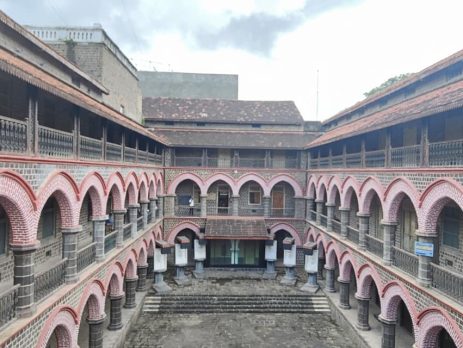
History
- Next to the magnificent shaniwar Wada in the center of Pune stands an imposing 18th-century mansion. The building is known as Nana Wada.
- It was the residence of Nana Phadnavis, a minister and statesman of the Maratha Empire during the Peshwa administration in Pune. The mansion is spread over 20,000 square feet and was built in 1780.
How to Reach from Pune
By Bus
By Car/ Rental Car Available
By Two Wheeler
Pune Zero Stone
शून्य मैल दगड
- Luckily the precarious nature of Pune’s Zero Stone is getting some attention by local historians, in particular Mandar Lawate who has made efforts to raise its awareness to the Pune Municipal Corporation (PMC). Sadly in 2017 the PMC’s heritage cell executive engineer Harshada Shinde said that she was unaware of the significance of the Zero Stone.
- Although the Zero Stone lies outside the premises of the GPO, they too have been approached with ideas as to how the monument could be better preserved and recognised. This includes draft plans to build a small structure over the stone, with finely dressed basalt stone columns and pediments, and an associated plaque.
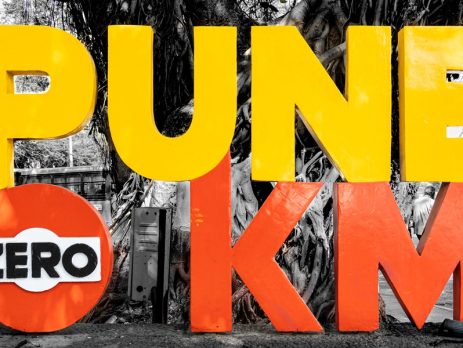
History
- Installed by the British in the early 1900s, the Zero Stone marks the exact geographic location of the city, and is one of 80 such stones installed by the British to mark the zero points for survey of the country. From this stone distances were measured to other Zero Stones in neighbouring cities and locations, most of which seem to have been located near the main post offices which were considered a central place. Pune’s Zero Stone is inscribed with the following locations; Poona, Bangalore, Sholapur, Ahmednagar, Nasik, Purandhar, Alandi, Sinhgad and Paud.
- The Zero Stone today seems to have a curious and precarious existence, leaning against the boundary wall of the GPO it’s become a useful storage spot for brooms and assorted items by the roadside tea vendors. There’s nothing to specifically highlight it’s existence or significance, a situation that led some years ago to the stone being half-buried under the pavement as a result of carelessness on the part of a civic contractor. It goes to show just how fragile some of India’s monuments can be.
How to Reach from Pune
By Bus
By Car/ Rental Car Available
By Two Wheeler
kasba Ganpati Temple
श्री कसबा गणपती
- Until 1925, Shri Kasba Ganpati Mandal celebrated the festival within the premises of the temple and from 1926 it has been celebrated in an enclosed mandap. Presently, the ten days of the festival is a platform for local artists to display their talents through various cultural programs thus allowing a large number of devotees to participate in the celebrations. On the last day, Shri Kasba Ganpati plays the leading role during the immersion procession
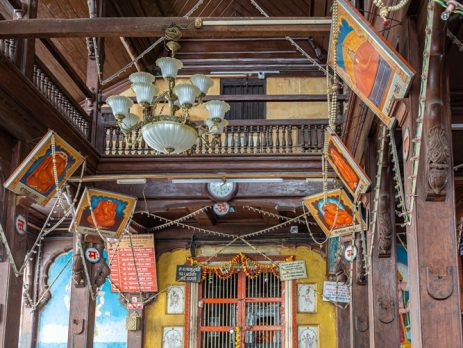
History
- In 1893, Bal Gangadhar Tilak, the great freedom fighter of India, initiated the Ganesh festival with the intention to bring like-minded people together to share ideas and exchange thoughts on freeing India from the British regime. Tilak started celebrating the Ganesh festival from his own house at Kesari Wada. Others followed and started celebrating the Ganesh festival.
- On this day, the offerings to the Lord, which till then was a private affair in every home, were brought out in the open and a common platform was created. Thus, came into being, the ‘Sarvajanik Ganpati’ in the year 1893. This brought the people together and people heard ‘kirtans’ (devotional songs) which resulted in mass education and helped bridge the gap between the different classes in society. It also created awareness among the people regarding the British regime. Solutions to common suffering were also resolved at the gatherings. Tilak’s endeavor led to the formation of numerous clubs or mandals in Pune. This gave a new dimension to the Ganpati festival.
- In the Ganesh festival, each mandal had its own special Ganesh idol made. On the 10th day of the Ganesh festival, the idol of Lord Ganesh is immersed in the river. Kasba Ganpati, being the local deity of Pune, was conferred the privilege of immersing the idol of Lord Ganesh first in the river.
How to Reach from Pune
By Bus
By Car/ Rental Car Available
By Two Wheeler
Shri Chattushringi Devi Mandir
श्री चतुःशृंगी देवी मंदिर
- The Chaturshringi temple is around 250-300 years old and has been renovated many times since its establishment in order to ensure that each part of the temple seems brand new. Till date, thousands of followers offer pilgrimage and prayers to the deity here. One of the most fascinating features of this temple is that it has a smaller version of the Mandir placed right at the entrance of the temple. That way, devotees can conveniently pray and give their offerings at the mini-temple if they wish to.
- The Chaturshringi temple is around 250-300 years old and has been renovated many times since its establishment in order to ensure that each part of the temple seems brand new. Till date, thousands of followers offer pilgrimage and prayers to the deity here. One of the most fascinating features of this temple is that it has a smaller version of the Mandir placed right at the entrance of the temple. That way, devotees can conveniently pray and give their offerings at the mini-temple if they wish to.
- The temple is placed on a slope 90 ft high and 125 ft wide. Since the name signifies “four peak mountains”, the temple was created across the four ranges. The Ganesh shrine includes eight miniature idols of Lord Ashtavinayaka, which are spread across four mountain peaks. The 100-steps till the temple are well constructed, with sitting and resting spots placed after every six steps. The uphill destination is made easier with numerous stopping places on the way with drinking water available throughout the temple area. Waterfalls, dharamshalas for people who wish to stay overnight, nagarkhanas, fountains and water banks have been created and maintained by the Mandir Trust. This has enabled a more convenient and peaceful journey for the devotees who take out time and put in the effort to visit this famous religious place.

History
- The history of the Chaturshringi Temple can be sourced back to the Maratha era, from the story of Durlabsheth Pitamberdas Mahajan. He was a devotee of goddess Chaturshringi. He was a very religious and rich Peshwa merchant. It is said that he used to travel from Pune to Vani on the full moon day of Chaitra just to pay his devotion to Saptashringi Mata. however, a few years later, he stopped paying his regular pilgrimage. As a result, the supervising Deity came in his dreams and asked him to bring her the idol from the Northwestern Mountain of Pune so that she could stay near his devotee. In order to fulfil the goddess’s wish, Durlabsheth went to the aforementioned mountain and to his surprise, he found the idol of his goddess.
- Out of sheer happiness and content, he decided to create a temple at the spot in order to mark this moment. This led to the origin of one of the oldest temples of Maharashtra. Even today, the story of Durlabsheth is an essential part of stories which are heard throughout
How to Reach from Pune
By Bus
By Car/ Rental Car Available
By Two Wheeler
Trishunda Ganpati Mandir
श्री त्रिशुंड गणपती मंदिर
- The temple also has a basement, which is believed to have been used by ascetics for meditation. The basement has an open hall with two pillars, along with a samadhi (memorial) of Gosavi. Due to an inlet for water collection, the basement is generally filled with water. It is not open to the public except on Guru Purnima, when the basement is cleaned, dried, and opened for people to pay homage to Gosavi’s memorial.
- There are clusters of other temples within the vicinity of the Trishund Ganapati Mandir. The more popular among these is the Nageshwar Mandir, which is surrounded by other smaller temples dedicated to Lord Vitthal, Lord Maruti, Lord Kala Ram, and one dedicated to Lord Vishnu that is popularly known as Juni Belbag Mandir.
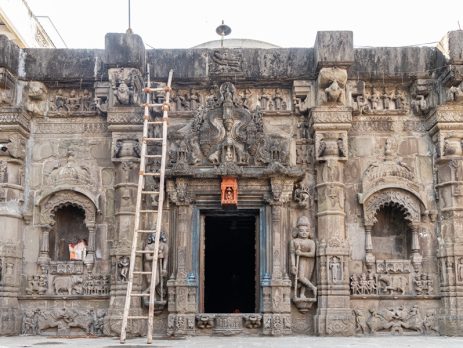
History
- This 16th-century temple houses a unique form of Lord Ganesha, seated upon a peacock and wielding a trishul.
- Situated on the banks of the Nagasari stream in Kasba Peth, the Trishund Ganapati Mandir is a Hindu temple dedicated to Lord Ganesh. It was commissioned by Mahant Bhimjigiri Gosavi, who settled in Pune from Dhampur, near Indore. The construction of the temple started on August 26, 1754 and was completed in 1770.
- The temple reflects the late Peshwa architecture style (1725–1800). There are three inscriptions on the temple walls in Devanagari, Persian, and Sanskrit containing details about the temple as well as verses from the Bhagavad Gita (a 700-verse Sanskrit scripture that is part of the Hindu mythological epic Mahabharata). Several unique sculptures are also carved on the front of this temple, one of them of a rhinoceros being tied with iron chains by a British soldier.
- The presiding deity at the temple is Trishund Mayureshwar Ganapati, a unique form of Lord Ganesh seated on a mayur (peacock), with trishund (three heads with trunks) and six arms. The idol is sculpted out of pure black basalt stone. The facade has depictions of Lord Shiva and Vishnu and various real and mythological creatures, including peacocks, parrots, and rhinos. The entrance, which leads to the garbhagriha (sanctum sanctorum), has a sculpture of Goddess Lakshmi with two elephants.
How to Reach from Pune
By Bus
By Car/ Rental Car Available
By Two Wheeler
Mahatma Phule Mandai
महात्मा फुले मंडई
- The market building is designed in the Gothic style. The builders used masonry carved from the local grey stone. The structure is dominated by an 80 feet central, squat, octagonal tower. The tower is surrounded by a verandah with a tiled roof. This covers the ground and first floor. Four market wings housing the majority of the stalls radiate out from the ground floor verandah. The market is entered via gothic arches located at the ends of each of the wings.
- Today the market has about 526 stalls of fruits and vegetables. It is always crowded because fruits and vegetables are available at a lower cost than other places in the city but is most crowded on weekends and holidays. The market has its own Ganesh Mandal for Ganesh Festival and is one of the oldest in Pune and Maharashtra. The proposed skywalk will run on four sides of the market.
- This is the name of Mandai’s Ganesh Mandal. This is one of the oldest Ganesh Mandal in Pune. The mandai Ganpati is a popular place to visit during the annual Ganesh Festival for local Hindu residents as well as out-of-town visitors. It has an idol of Lord Ganesh sitting on a swing with Goddess Sharada.
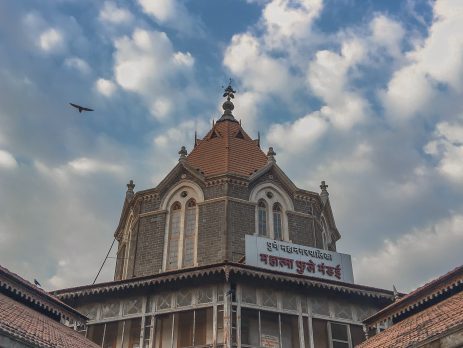
History
Laced with a history that goes back to the British Era, Mahatma Phule Mandai in Shukrawar Peth is a heritage stop in Pune that has stood the test of time.Being Pune’s biggest and oldest vegetable and fruit market, we’re taking you back in time for a history lesson with fascinating facts about the Mandai, so let’s get started!
1. The construction started in 1882 and it was completed in 1886 at a whopping cost of 2.3 lakhs, which seems nothing in today’s day and age, but it was a handsome amount 132 years ago.
2. The Mandai was initially named Reay Market, named after the then Governor of Bombay, Lord Reay. It was later renamed to Mahatma Phule Mandai in 1938 in honor of Mahatma Jyotiba Phule, one of Pune’s and the country’s greatest reformers.
3. In addition to being a fruit and vegetable market, the building also housed the Pune Municipal Council office till 1966. Later, the municipal office shifted out and moved to a new building in Shivaji Nagar.
How to Reach from Pune
By Bus
By Car/ Rental Car Available
By Two Wheeler
Albert Edward Institute Library
- To this day the library houses over 20,000 books from novels to scriptures to study materials on every genre under the sun. It also houses books in Hindi, Marathi, Gujarati, and Sanskrit. The building is divided into two parts. The Library is an archaic building with arches, a cobblestone facade, and long hanging lights, whereas the reading room is located in another building that is connected by a passageway. You can find a long table in the reading room where people more than 100 years ago had once sat. Cool right?
- The library is popular with students and regulars, who have been visiting the library for years together. We think it’s a great spot for reading, also if you’re hunting down specific matters, the books here are dated, so you might strike gold!
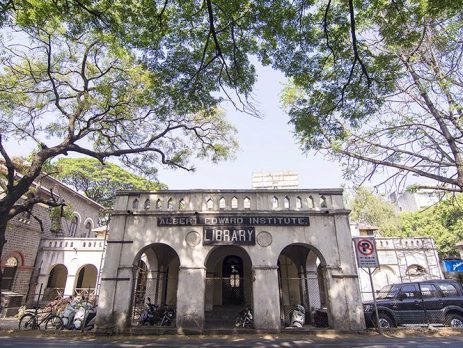
History
- This 143-year-old library in Camp is every bibliophile’s dream come true. Albert Edward Institute and Cowasji Wadia Hall and Library is not just a safe haven for book lovers, but there’s an interesting slice of history attached to it. Read on to find out what makes this library special.
- This library was first established when Pune was still called Poona. In 1872, the story goes that Prince Albert Edward made a visit to Poona while India was still part of the British rule. The library was set up to commemorate this visit. But the library that started on a small scale was officially inaugurated in 1875. Another fun fact is that the library used to be operational as the Cantonment Jail before the new lease to the building was granted and was again inaugurated in 1881 by Sir James Fergusson, the then Governor of Bombay. In the late 1900s, the British gave up control and passed the reins onto the Parsis and that’s how it got the name we know now.
How to Reach from Pune
By Bus
By Car/ Rental Car Available
By Two Wheeler
Wellesley Bridge(Sangam Bridge)
- The bridge was damaged during the Panshet floods of 1961 but was repaired by the PMC, and soon returned to its role as the busiest bridge in Pune, linking the College Of Engineering Pune (COEP) to Sangamwadi.
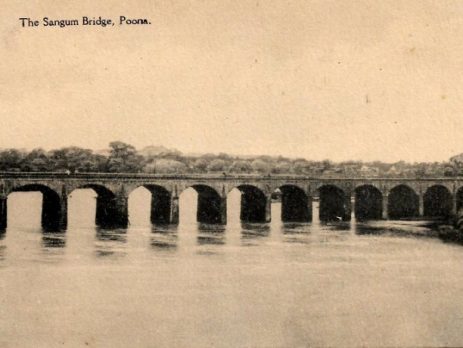
History
- One of the major bridges over the Mutha River, it was built in 1830 and named after General Arthur Wellesley in honor of his military victories in the Deccan.
- One of the oldest bridges in Pune, Sangam Bridge was built in 1830 and was officially named Wellesley Bridge by Sir John Malcolm in honor of General Arthur Wellesley. A Hindu temple below the bridge that stands on the ghat at the confluence of the Mula and Mutha rivers led to the colloquial name Sangam Bridge being used in tandem with its British name.
- The bridge was constructed by Captain Robert Foster, Bombay Engineers, and inaugurated by the then governor of Bombay, John Malcolm. It consisted of eight segmental arches with a 52.5-foot span, a rise of 13 feet, and a 2.5-foot-thick arch ring, carrying a roadway 28 feet wide at a height of 47 feet above the deepest part of the river bed.
- In 1839, the bridge’s wooden body was redesigned and reconstructed by Colonel A.U.H. Finch, using stronger rock-faced rusticated masonry carved from local grey trap at a cost of £11,093 (Rs 1,10,930). Protection was provided on both sides by a neat dressed-stone parapet. The bridge was opened to the public in May 1875.
- In 1875, the bridge structure was reinforced with stone. Its original name, Wellesley, is still used but is pronounced ‘Vasli’ by the locals. The bridge is listed as a Grade II heritage structure by the Pune Municipal Corporation (PMC). A railway bridge is positioned about 150 yards above Wellesley Bridge and runs parallel to it.
How to Reach from Pune
By Bus
By Car/ Rental Car Available
By Two Wheeler
Echonomy Zones Sites
an area of land on which is located industrial infrastructure and ancillary works.
Heritage Places in PuneHeritage Places in PuneHeritage Places in PuneHeritage Places in PuneHeritage Places in PuneHeritage Places in PuneHeritage Places in PuneHeritage Places in PuneHeritage Places in PuneHeritage Places in PuneHeritage Places in PuneHeritage Places in PuneHeritage Places in PuneHeritage Places in PuneHeritage Places in Pune
